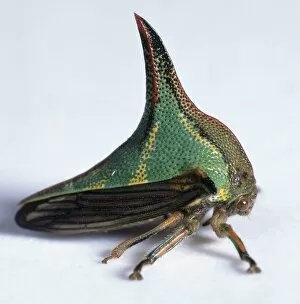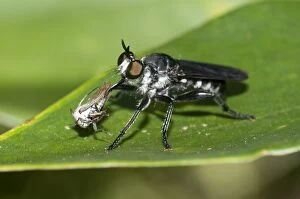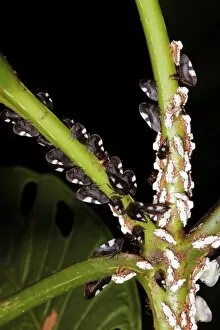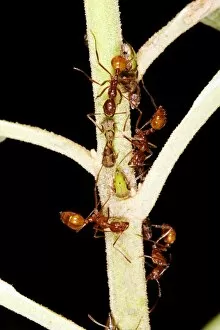Treehoppers Collection
Treehoppers, also known as thornbugs, are fascinating creatures that belong to the family Membracidae
All Professionally Made to Order for Quick Shipping
Treehoppers, also known as thornbugs, are fascinating creatures that belong to the family Membracidae. With their unique appearance and clever camouflage tactics, these insects have captured the attention of nature enthusiasts worldwide. In Picture No. 11981159 and Picture No. 11980801, we can see treehopper bugs perched on a plant stem. Their front view showcases their intricate body structure and vibrant colors. These tiny creatures may seem insignificant at first glance, but they play an essential role in their ecosystem. The Thorn Bug (Umbonia crassicornis) is a particular species that stands out with its pointed, curved horn displayed in side view (Picture No. 11806894). This brightly colored appendage not only adds to its aesthetic appeal but also serves as a defense mechanism against predators. Another captivating feature is their ability to disguise themselves as thorns (Picture No. 4650). Two Thorn Bugs can be seen clinging to a branch with large multicolored crescent-shaped horns on their backs while blending seamlessly into the surroundings from a side view perspective. As these insects go through different stages of development, both larvae and adults exhibit intriguing characteristics (Picture No. C014 / 4650). From small nymphs resembling ants to fully grown individuals adorned with elaborate structures, each phase offers new insights into the world of treehoppers. Interestingly enough, ants have formed a symbiotic relationship with treehoppers by harvesting honeydew produced by these insects (Picture No. Ants harvesting treehopper honeydew). The ants protect them from potential threats while benefiting from this sugary secretion—a perfect example of nature's interconnectedness. Thornbugs found in Costa Rica exemplify the diversity within the Membracidae family (Picture No. Thornbugs - Costa Rica - family membracidae).














